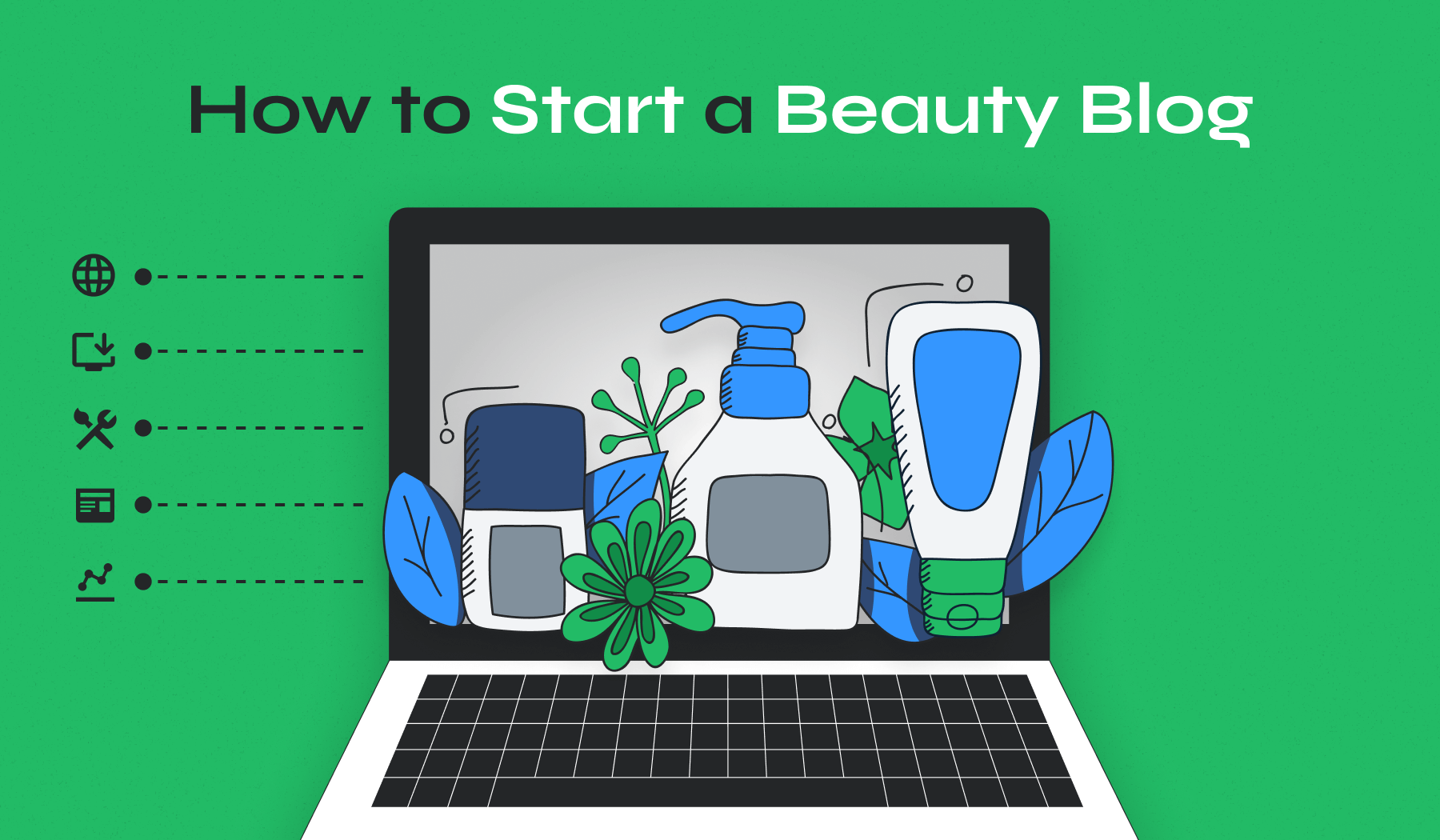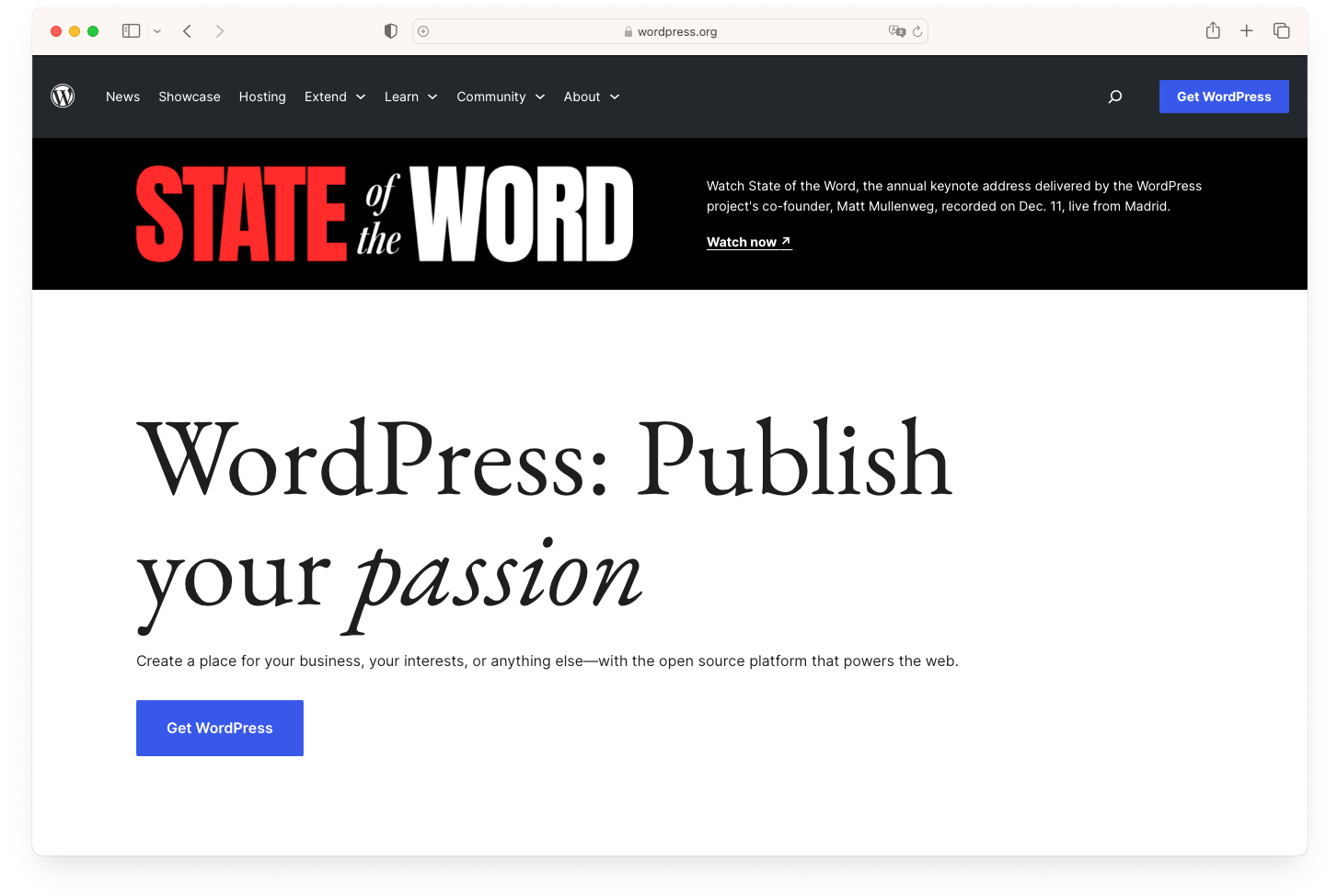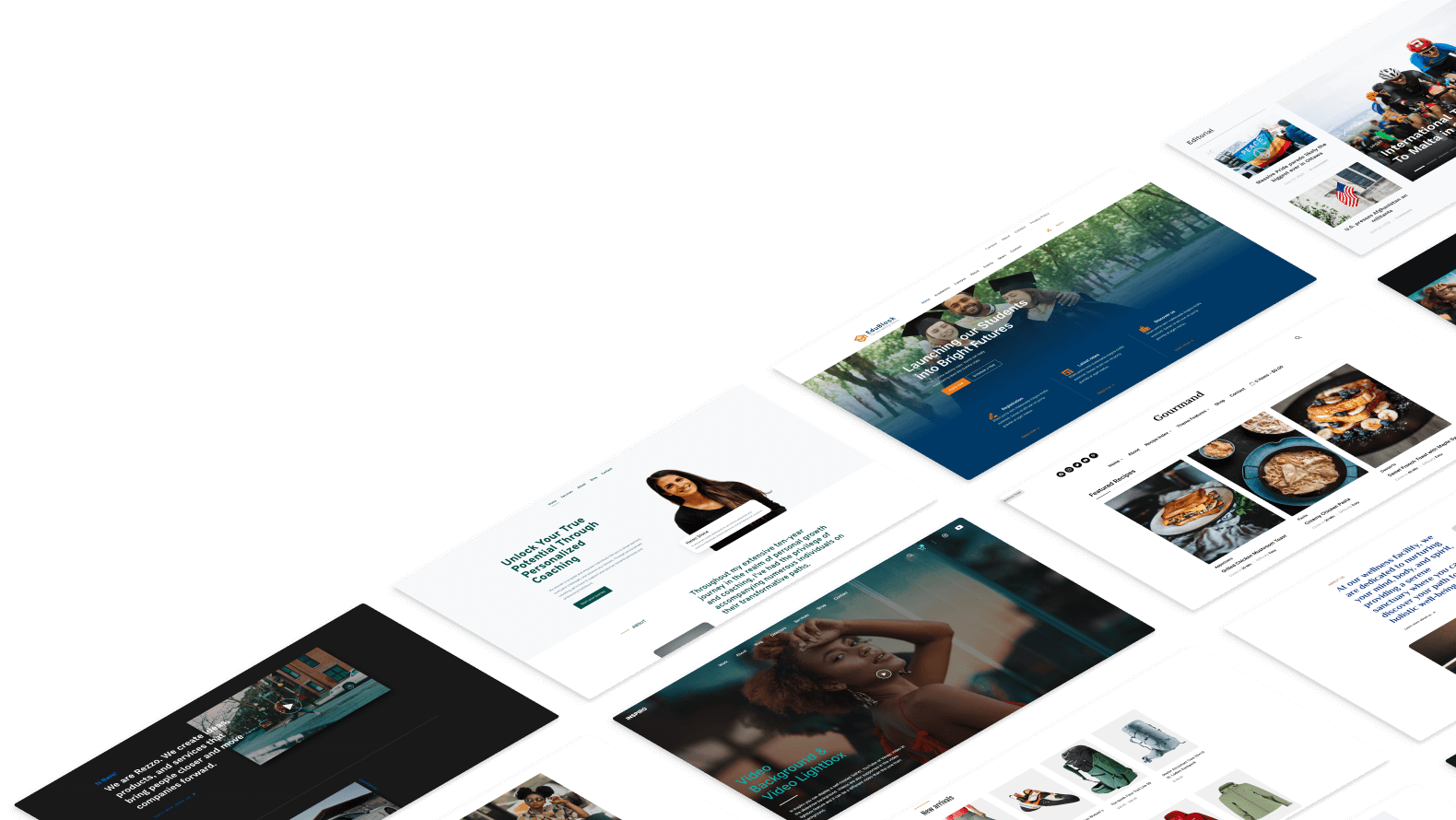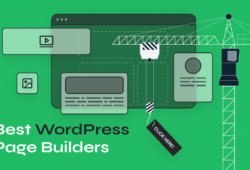Starting a beauty blog lets you share your passion for skincare, makeup, and self-care while building a community around what you love. Whether you’re interested in reviewing the latest products, teaching makeup techniques, or discussing sustainable beauty practices, a blog gives you a platform to connect with like-minded readers and potentially earn income doing what you enjoy.

This guide walks you through the complete process—from picking your niche and setting up your site to creating content, growing your audience, and making money. By the end, you’ll have a clear roadmap for launching a beauty blog that stands out.
Quick Guide to Starting a Beauty Blog
- Step 1: Choose Your Niche
- Step 2: Select Your Blogging Platform, Domain & Hosting
- Step 3: Build Your Brand Identity
- Step 4: Plan and Create Content
- Step 5: Promote and Grow Your Blog
- Step 6: Monetization Strategies
- Step 7: Tools & Resources
1. Choose Your Niche
A focused niche helps you attract loyal readers and rank better in search results. Instead of covering everything beauty-related, narrow your focus to a specific area where you can build authority.
Popular Beauty Blog Niches
- Green and sustainable beauty – Eco-friendly products, zero-waste routines, and ethical brands
- Mature skin care – Anti-aging solutions, ingredient education, and age-appropriate techniques
- Men’s grooming – Skincare basics, beard care, and product recommendations for men
- Vegan and cruelty-free beauty – Plant-based formulations and brands that don’t test on animals
- Budget beauty – Drugstore finds, dupes for high-end products, and affordable routines
- K-beauty or J-beauty – Korean or Japanese skincare philosophies and products
- Makeup artistry – Advanced techniques, editorial looks, and professional tips
How to Validate Your Niche
Start by brainstorming 10–12 post ideas specific to your chosen area. If you struggle to come up with topics, your niche might be too narrow. Research competing blogs to see what they cover and how you can offer a fresh perspective. Look for gaps in existing content—maybe no one’s thoroughly covering sensitive skin solutions for people over 40, or budget-friendly K-beauty for beginners.
Your niche should balance your genuine interest with audience demand. You’ll be creating content consistently, so pick something you’re excited to explore long-term.
2. Select Your Blogging Platform, Domain & Hosting
The platform you choose determines how much control you have over your blog’s design, functionality, and monetization options.
Comparing Platforms
WordPress (WordPress.org) offers the most flexibility for serious bloggers. You own your content completely, can customize everything, and have unlimited monetization options. It requires purchasing hosting separately, but gives you professional capabilities from day one. Most successful beauty bloggers use WordPress because it scales as they grow.

Wix provides an easier learning curve with drag-and-drop design tools. It works well if you want something simple and don’t mind less customization. However, you’re limited in advanced features, and switching platforms later becomes difficult.
Shopify makes sense if you plan to sell products directly—like your own beauty line or curated boxes. It integrates e-commerce seamlessly but costs more and isn’t ideal if you’re primarily focused on content.
For most people starting a beauty blog, WordPress offers the best balance of control, customization, and growth potential.
Choosing Your Domain Name
Your domain name becomes your blog’s identity, so pick something memorable and relevant. A catchy domain should be:
- Short and simple – Easier to remember and type
- Related to beauty – Include words like “glow,” “beauty,” “radiant,” or your niche focus
- Available as a .com – This extension feels most professional and trustworthy
Check domain availability through registrars like Namecheap or GoDaddy. If your first choice is taken, try variations or use a beauty-related prefix or suffix.
Web Hosting Options
Web hosting stores your blog’s files and makes them accessible online. You’ll need to choose between:
Shared hosting costs less ($3-10/month) and works fine when you’re starting out. Your site shares server resources with others, which can slow things down as you grow. Providers like Bluehost and SiteGround offer beginner-friendly shared plans with one-click WordPress installation.
Managed WordPress hosting ($15-50/month) includes automatic updates, security monitoring, and performance optimization. It costs more but handles technical maintenance for you. Companies like WP Engine and Kinsta specialize in this.
Most beauty bloggers start with shared hosting and upgrade to managed hosting once they’re getting steady traffic.
⚡ Check out our guide to the best WordPress hosting providers for detailed comparisons.
3. Build Your Brand Identity
Your brand identity makes your blog recognizable and helps readers remember you. This includes your blog name, visual style, and overall personality.
Naming Your Blog
Your blog name should reflect your niche and personality. Consider these approaches:
- Your name + beauty/niche – “Sarah’s Green Beauty” or “Mike’s Grooming Guide”
- Descriptive name – “The Minimalist Skincare Blog” or “Budget Beauty Finds”
- Creative name – “Glow Recipe” or “Into The Gloss”
Test potential names by saying them out loud and imagining them as a blog header or social media handle. Make sure the name isn’t already trademarked or heavily used by another beauty brand.
Visual Style and Design
Create a cohesive look that matches your content and appeals to your target audience. Start with a mood board—collect images, color palettes, and design elements that represent your aesthetic. Tools like Pinterest make this easy.

Key visual elements:
- Color palette – Choose 3-5 colors that complement beauty imagery (product photos, makeup looks, skincare flatlays). Soft neutrals work well for skincare-focused blogs, while bold colors suit makeup content.
- Logo – A simple, clean logo works better than something overly complex. Use Canva‘s free templates or hire a designer on Fiverr for affordable custom work.
- Blog header – This appears at the top of your site and sets the first impression. Include your logo and navigation menu in a clean layout.
- Typography – Pick two fonts maximum: one for headings and one for body text. Ensure they’re readable on all devices.
⚡ Start with a professionally designed foundation—explore WPZOOM themes built for beauty bloggers.
Essential Pages
Every beauty blog needs:
- About page – Introduce yourself, explain your approach to beauty, and share why readers should trust your recommendations
- Contact page – Make it easy for brands, readers, and collaborators to reach you
- Disclosure page – Required if you use affiliate links or accept sponsored content
Integrate social media buttons prominently so readers can follow you on Instagram, Pinterest, or TikTok. Add clear call-to-action buttons throughout your site—subscribe to your newsletter, follow on social, or shop your favorites.
Upgrade Your Website with a Premium WordPress Theme
Find a theme that you love and get a 10% discount at checkout with the FLASH10 code
Choose your theme
4. Plan and Create Content
Consistent, valuable content builds your audience and establishes your expertise. A content calendar keeps you organized and ensures you’re publishing regularly.
Developing Your Content Calendar
Plan content at least 2-4 weeks ahead. Mix evergreen posts (always relevant) with timely content (seasonal trends, new releases). A balanced calendar might include:
- Week 1: Evergreen tutorial (e.g., “How to Create a Natural Everyday Makeup Look”)
- Week 2: Product review (new launch or seasonal item)
- Week 3: Educational post (e.g., “Understanding Retinol: Benefits and How to Use It”)
- Week 4: Personal story or opinion piece
This variety keeps content fresh while building your archive of searchable, evergreen posts.
Content Ideas for Beauty Bloggers
Skincare routines: Morning vs. evening routines, seasonal adjustments, routines for specific skin types or concerns. Break down your personal routine with product recommendations and explain why each step matters.
Makeup tutorials: Step-by-step looks for different occasions—work makeup, date night, festival vibes. Include product lists and technique tips. Video content performs especially well for tutorials.
Product reviews: Honest assessments of new releases, drugstore finds, or luxury items. Compare similar products to help readers make decisions. Include swatches, wear tests, and ingredient analysis.
Ingredient breakdowns: Educate readers about what’s actually in their products. Explain the benefits and potential concerns with ingredients like hyaluronic acid, niacinamide, or controversial additives.
Expert interviews: Connect with dermatologists, makeup artists, or brand founders for Q&A posts. This adds credibility and provides unique value.
DIY recipes: Face masks, lip scrubs, or hair treatments using natural ingredients. Always include safety notes and patch test reminders.
Creating High-Quality Visual Content
Beauty content is inherently visual. Invest time in learning basic photography and editing:
Photo tips:
- Natural lighting works best—shoot near windows during daytime
- Clean, uncluttered backgrounds keep focus on products
- Consistent styling makes your feed cohesive
- Show products in use, not just packaging shots
Editing tools:
- Canva – Create graphic design templates for blog headers, Pinterest pins, and social graphics
- BeFunky – Quick photo editing with filters and adjustment tools
- Lightroom Mobile – Professional-level editing on your phone
Create templates for recurring content types (product reviews, tutorials, top-10 lists) so you maintain visual consistency without starting from scratch each time.
Your Writing Voice
Develop a consistent voice that matches your personality and resonates with your audience. Are you the trusted expert who explains science? The fun friend who discovers cool products? The skeptical minimalist who questions trends?
Write like you’re talking to a friend who asked for advice. Avoid overly formal language, but stay professional. Proofread everything—typos and grammar mistakes hurt credibility, especially when you’re recommending products people might purchase.
5. Promote and Grow Your Blog
Creating great content is only half the work. You need to actively promote your blog to build an audience.
Search Engine Optimization
SEO helps your blog appear in Google searches when people look for beauty advice. Start with these basics:
Keyword research: Find terms people actually search for. Tools like Ubersuggest or Google’s Keyword Planner show search volume and competition. Target specific, achievable phrases like “best moisturizer for dry skin winter” rather than impossible terms like “best moisturizer.”
On-page optimization: Include your target keyword in your title, first paragraph, a few subheadings, and naturally throughout your post. But write for readers first—keyword-stuffed content ranks poorly and drives people away.

Site structure: Organize content with clear categories (Skincare, Makeup, Reviews, Tutorials). Use descriptive URLs and add alt text to images. Install a plugin like RankMath or Yoast to guide optimization.
Social Media Marketing
Different platforms serve different purposes in your promotion strategy:
Instagram: A visual platform perfect for beauty content. Post product photos, makeup looks, and short tips. Use Stories for behind-the-scenes content and polls to engage followers. Reels reach new audiences with quick tutorials or before-and-after transformations.
Pinterest: Functions as a visual search engine. Create vertical pins for each blog post with eye-catching graphics and clear headlines. Beauty content performs exceptionally well here—one popular pin can drive traffic for months.
TikTok: Growing rapidly for beauty content. Short videos showing quick tips, product testing, or “get ready with me” content build audiences fast. Link to detailed blog posts for people wanting more information.
Facebook: Join beauty groups and share helpful advice (without spamming links). Build genuine relationships before promoting your content.
YouTube: Requires more production effort but offers high engagement. Video tutorials complement written blog posts and open additional monetization through ad revenue.
Cross-promote across platforms—share Instagram posts to Facebook, turn blog posts into Pinterest graphics, and mention your blog in TikTok captions.
Community Building
Engaged readers become loyal followers who share your content and buy recommended products:
Respond to comments on your blog and social media. Answer questions thoughtfully and start conversations. Even a simple “thanks for reading!” makes people feel valued.
Start an email newsletter to connect directly with readers. Share new posts, exclusive tips, or personal updates. Email marketing tools like Mailchimp offer free plans for small lists.
Collaborate with other bloggers in complementary niches. Guest post on their blogs, participate in product roundups, or host joint giveaways. This exposes you to new audiences.
Post consistently to build momentum. Aim for 2-4 posts per week when starting out. Frequent publishing helps SEO and gives readers reasons to return regularly.
6. Monetization Strategies
Once you’ve built an audience, multiple income streams become available.
Affiliate Marketing
Earn commissions when readers purchase products through your links. Join affiliate programs from beauty retailers:
Direct brand programs: Many beauty brands like Herbivore, Kiehl’s, and The Ordinary offer affiliate partnerships. Check their websites for “affiliate” or “partner” links.
Affiliate networks: Amazon Associates covers almost everything, though commission rates are low (1-3%). RewardStyle/LTK specializes in fashion and beauty with higher payouts.
Requirements: Always disclose affiliate relationships clearly. The FTC requires transparency—state at the beginning of posts that links may earn you commission.
Only recommend products you’ve genuinely used and believe in. Pushing every sponsored product destroys trust faster than you can earn commissions.
Ad Networks
Display ads generate passive income based on page views. Google AdSense accepts beginners but pays modestly. Mediavine and AdThrive require 50,000+ monthly sessions but offer much higher rates.
Ads can slow your site and interrupt user experience. Optimize WordPress speed to minimize impact and consider whether ad revenue justifies the trade-offs at your current traffic level.
Sponsored Posts
Brands pay you to create content featuring their products. Rates vary widely based on your audience size and engagement:
- Micro-influencers (10k-50k followers): $100-500 per post
- Mid-tier (50k-100k): $500-2,000
- Established bloggers (100k+): $2,000-10,000+
Build a media kit showcasing your traffic stats, audience demographics, and past collaborations. Pitch brands directly or join influencer networks like AspireIQ or Fohr.
Always maintain editorial control and only partner with brands you genuinely support. Disclose sponsored content clearly—use #ad or #sponsored hashtags on social, and statement disclosures on blog posts.
Digital Products and Services
Create income independent of brands:
E-books or guides: Package your expertise into downloadable PDFs—”Complete Guide to Korean Skincare” or “Makeup Techniques for Hooded Eyes.” Price between $10 and $30, depending on depth.
Online courses: Teach specific skills through video lessons. Platforms like Teachable or Thinkific handle hosting and payment processing.
Consultations: Offer one-on-one advice sessions via Zoom. Help clients develop personalized routines or teach makeup application techniques.
Preset packs: Sell Lightroom presets for beauty photography or Canva templates for beauty content creators.
7. Tools & Resources
The right tools streamline your workflow and improve content quality.
Design and editing:
- Canva – Create graphics, Pinterest pins, and social media content with drag-and-drop templates
- BeFunky – Quick photo editing with beauty-specific filters and touch-up tools
- Adobe Lightroom – Professional photo editing (mobile and desktop versions available)
SEO and analytics:
- RankMath or Yoast – WordPress plugins guiding on-page optimization
- Google Analytics – Track traffic sources, popular content, and audience behavior
- Google Search Console – Monitor search rankings and find technical issues
Productivity:
- Trello or Asana – Organize content calendars and track post ideas
- Grammarly – Catch typos and improve writing clarity
- Buffer or Later – Schedule social media posts in advance
Performance:
- WP Rocket – Caching plugin that speeds up WordPress sites
- Smush or ShortPixel – Compress images without losing quality
Email marketing:
- Mailchimp – Free for up to 500 subscribers with easy automation
- ConvertKit – Designed for creators with advanced segmentation
Launch Your Beauty Blog With WPZOOM
WPZOOM’s WordPress themes are built specifically for content creators who need professional designs without technical complexity. Our themes feature stunning layouts optimized for visual content, customizable color schemes matching any beauty aesthetic, and responsive designs that look perfect on every device. Whether you’re focused on skincare advice, makeup tutorials, or product reviews, WPZOOM themes help your content shine while you focus on what matters—creating value for your readers.
Explore our collection to find a design that matches your unique style and start building your beauty blog today. Professional design, ongoing support, and a community of creators ready to help you succeed—that’s the WPZOOM difference.

